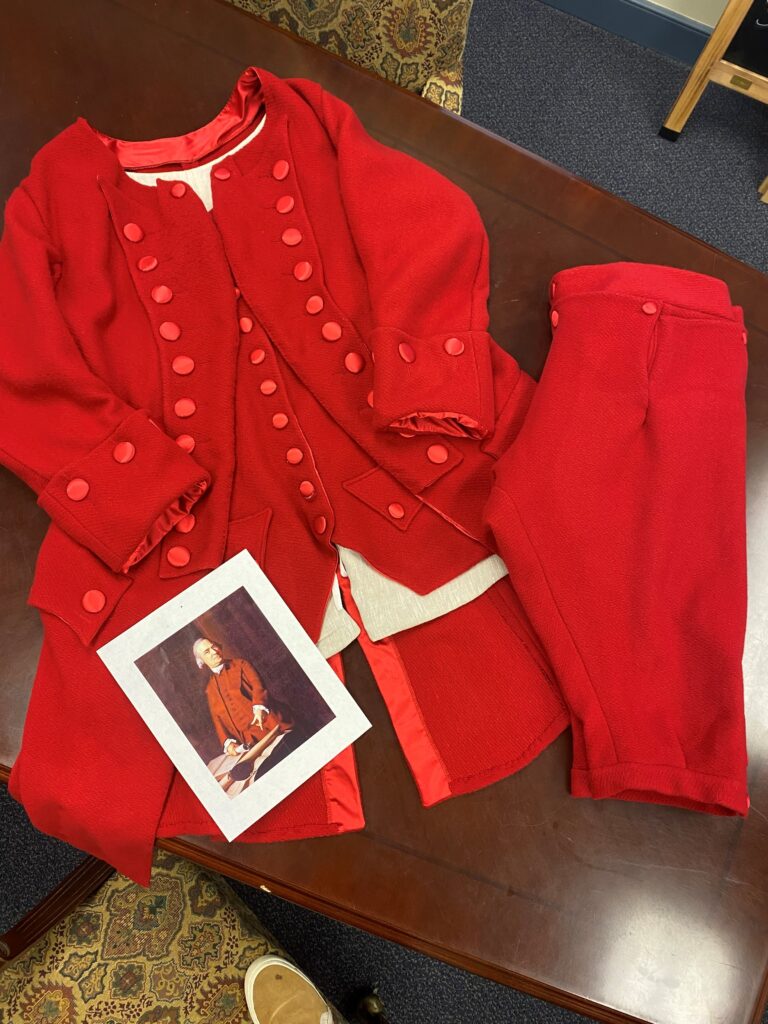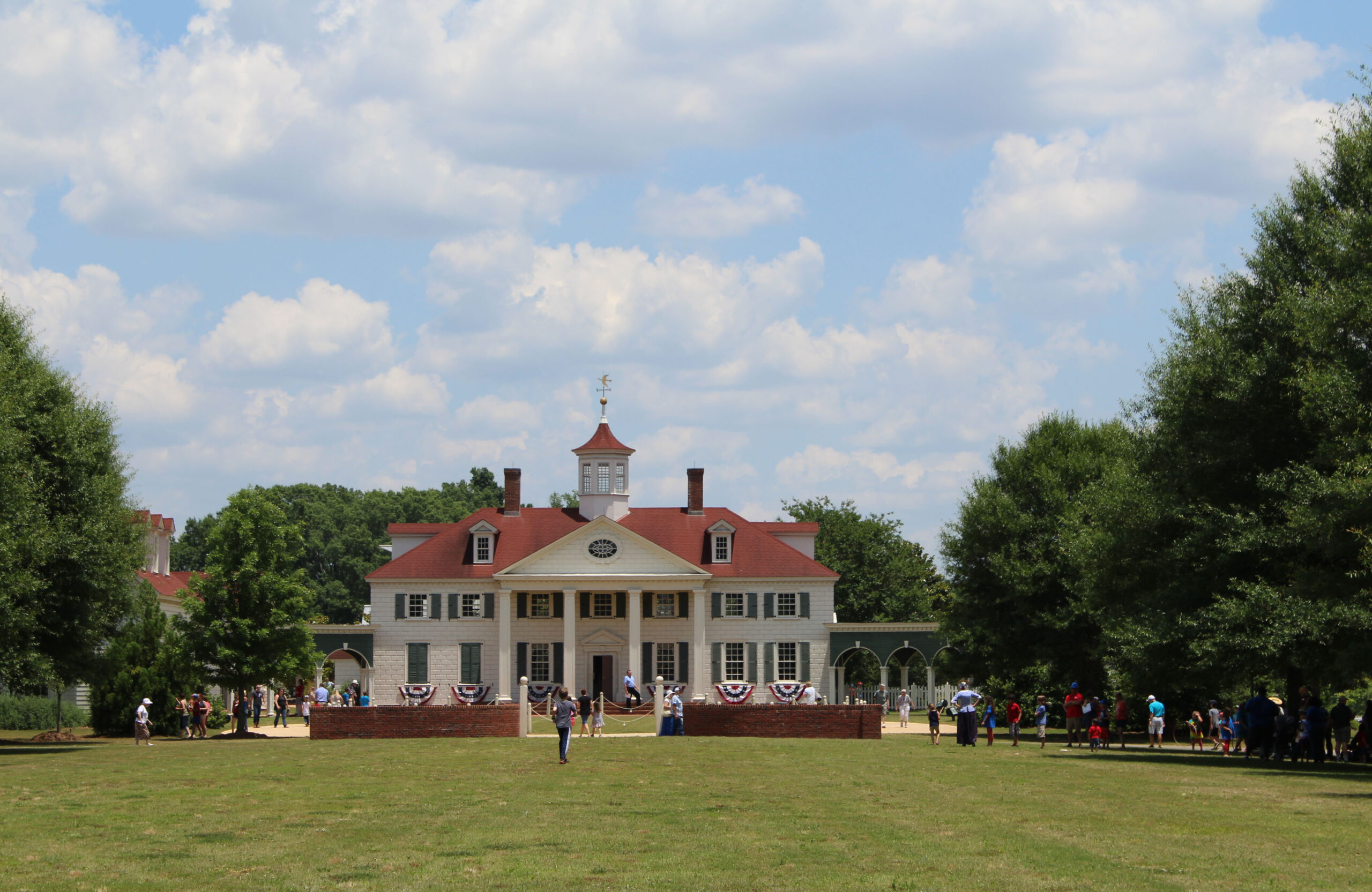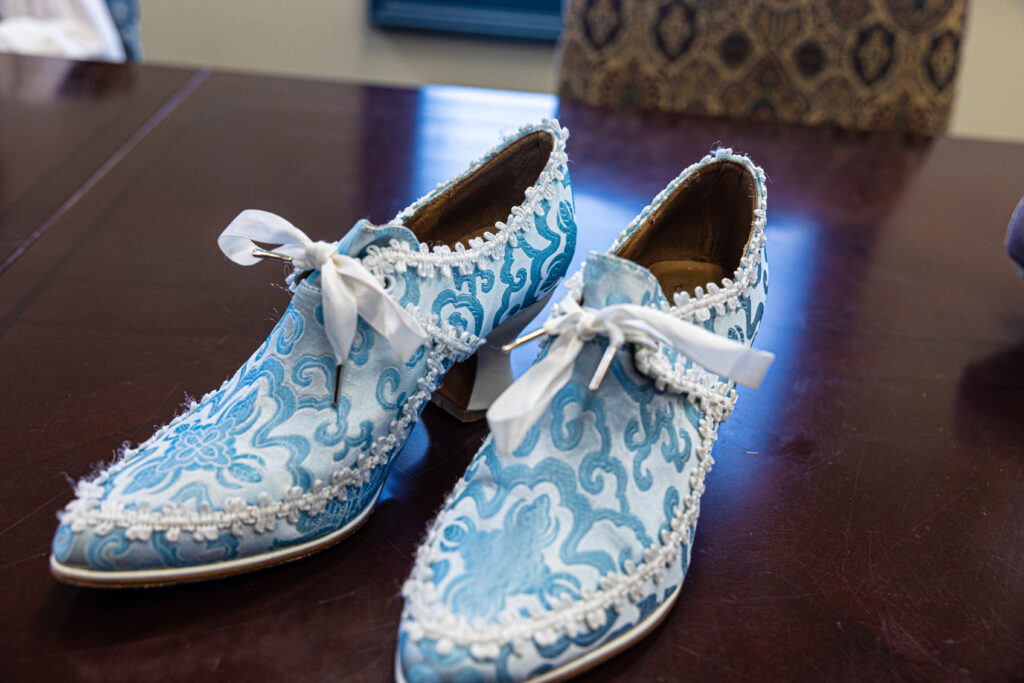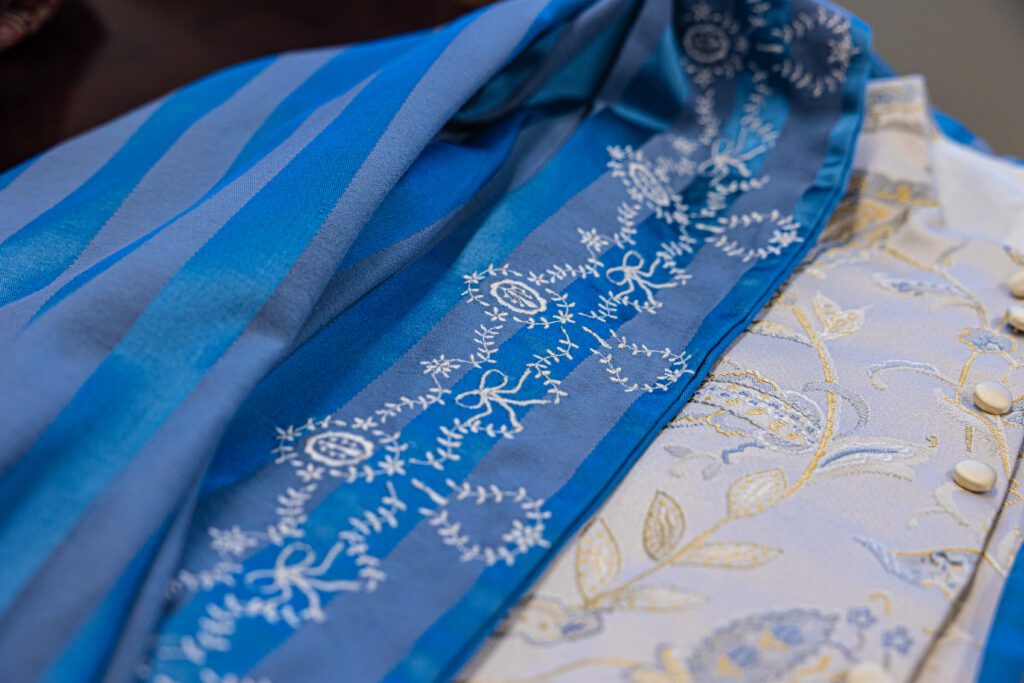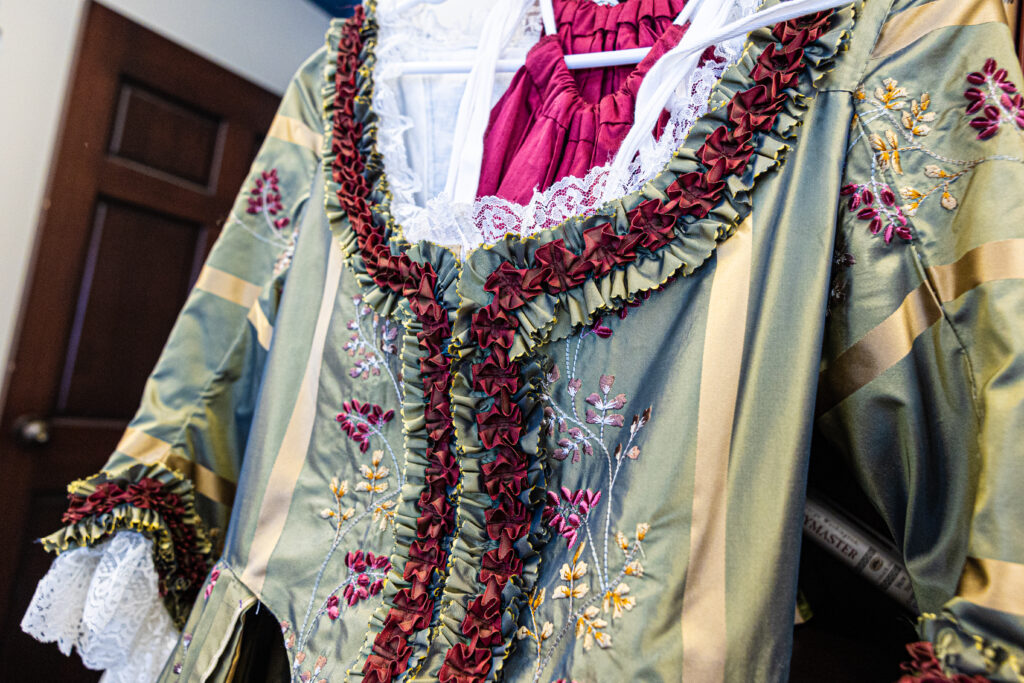For 25 years, the American Village costumes have brought history to life.
By Katharine Armbrester
Photography by Steven Ross and Courtesy American Village
American Village has educated and delighted its many visitors ever since it was founded by now-president emeritus Tom Walker in 1999. The village offers replicas of historic buildings and actors (also called interpreters) who portray notable persons in U.S. history, like George Washington and Patrick Henry. Yet these talented actors and this charming re-creation of early American life would be incomplete without the dedicated women in the costume department who work diligently for authenticity in everything the actors wear.
Nancy Moore Estes has been indispensable to the costume department since the very beginning. She began as a part-time interpreter, and due to her sewing talents and knowledge of history, eventually became the historic clothing director. “A lot of what we did was trial and error,” remembers Estes, who is now the head of interpretive programs. In the early days, she made costumes in her apartment. “There were not many resources in 2000; there are so many more now,” she says. “You didn’t buy things off the internet in 2000—I had to get on the phone.”
Estes was constantly researching and resourceful, at one point crafting imitation ermine for a cape she made for the actor portraying King George III. “You do what you 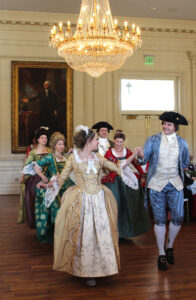 can with the resources you have,” she says. “The costume department has really changed and evolved in the past 25 years.” Angel Evans began working at American Village in 2007 and took over as costume director in 2019. She works alongside her talented sister-in-law Rebecca Evans, who is also the co-director of the Junior Interpreter Program. “We work hard all year,” says Evans, but starting in June they will be busier than ever, with six part-time and 13 full-time interpreters who require the services of the costume department. “The costumes are a visual representation to the public of what we do, and it solidifies that immersive experience.” A goal is for visitors to feel they have gone back in time. “We strive above all else to be as historically accurate as possible,” Evans says.
can with the resources you have,” she says. “The costume department has really changed and evolved in the past 25 years.” Angel Evans began working at American Village in 2007 and took over as costume director in 2019. She works alongside her talented sister-in-law Rebecca Evans, who is also the co-director of the Junior Interpreter Program. “We work hard all year,” says Evans, but starting in June they will be busier than ever, with six part-time and 13 full-time interpreters who require the services of the costume department. “The costumes are a visual representation to the public of what we do, and it solidifies that immersive experience.” A goal is for visitors to feel they have gone back in time. “We strive above all else to be as historically accurate as possible,” Evans says.
Evans commissions period-accurate wigs from someone who used to work at Colonial Williamsburg, and she orders most of the fabrics she needs for costumes—primarily linen, wool, cotton, silk, and velvet. “I wish it was as easy as going to the fabric store, but it’s not,” she says. She regularly needs items from India, Canada, Sweden, England, and purchases linen from California, along with American-made silks. There is always positive feedback from visitors. “People are so interested in what we’re wearing and how it’s made,” says Evans. “And they’re surprised at the detail and the amount of effort we put into it.”
“Social media has opened the door to faster, wider-spread research” Evans continues. She also follows Colonial Williamsburg, Mount Vernon, and Monticello on Instagram, as well as “artists from all over the world who are historical clothing experts.” She also gets inspiration for costumes from paintings, primary documents, and artifacts in museums. Evans recently made a costume based on a painting of Samuel Adams by John Copley, and when American Village did a program about Martha and George’s wedding, Evans made a costume that matched a description of Martha’s wedding dress from a letter. She also copied Martha’s wedding shoes, which are kept at Mount Vernon. The actors who depict George III and Queen Charlotte occasionally “arrive” to greet visitors, and their costumes are based on their coronation paintings.
Visitors want to know how the actors cope with being in full costume in the Alabama heat. “That question is probably asked more than any other question, April through September,” says Evans. The natural fabrics are more breathable, particularly linen, “since it’s more likely to draw sweat away from your skin.” The actors also wear sunscreen, hydrate, and take breaks. Many of the actors also wear hats and dresses with quarter-length sleeves, along with neckerchiefs, which protect the neck and chest from the sun.American Village will celebrate its 25th anniversary on November 30th. “I’m really pleased how far we’ve come in 25 years,” Estes says. “It’s exciting to think about where we started from, where we are now, and then where we’re going. It’s an exciting time at American Village.”
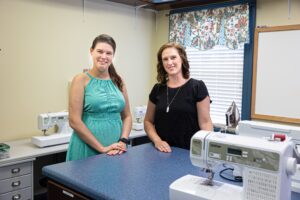
American Village offers daily programming geared to young children to adults, and located at 727 Highway 119 in Montevallo. The summer program opened to the public June 1, and runs Tuesdays-Saturdays from 10 a.m.-4 p.m. during June and July. On July 4, there will be an all-day Independence Day celebration with fireworks in the evening. American Village is closed in August. Regular admission is $11, $10 for students and youth (ages 5-17), $9 for seniors, and free to children ages 4 and under, veterans and active military.
